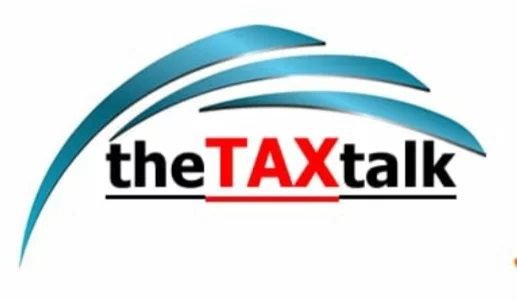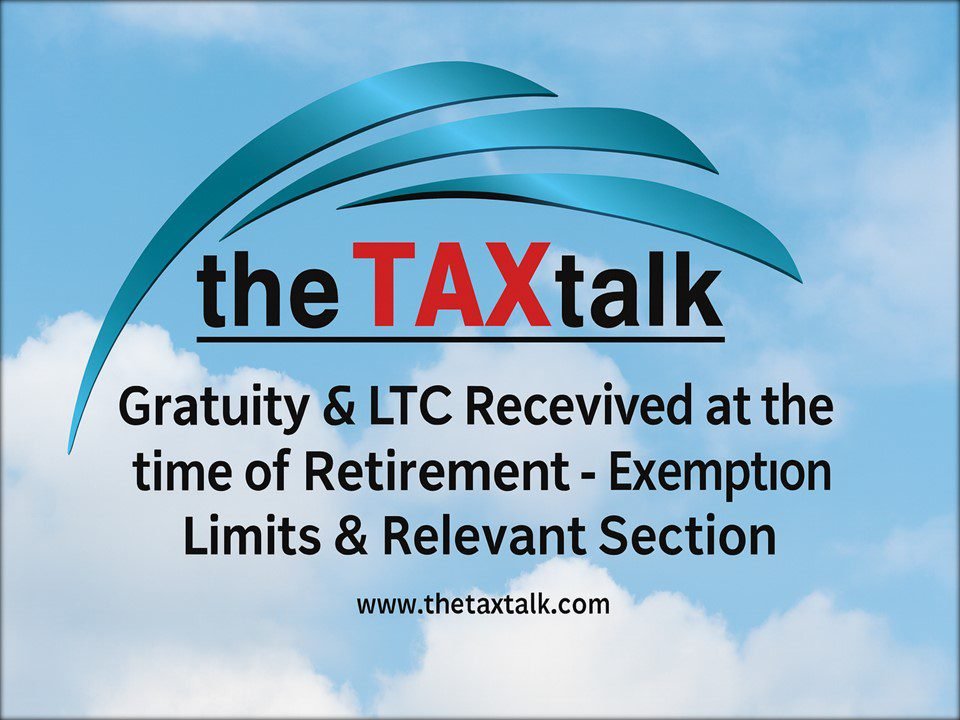![]()
Gratuity & LTC Received at the time of Retirement – Exemption Limits & Relevant Section
Applicable section
Exemption of gratuity is governed by Section 10(10) of the Income Tax Act, 1961.
Within Section 10(10), there are sub-clauses:
• 10(10)(i): Gratuity for government employees (death-cum-retirement, etc.)
• 10(10)(ii): Gratuity under the Payment of Gratuity Act, 1972 (for “covered” private sector employees)
• 10(10)(iii): Gratuity for employees not covered under the Payment of Gratuity Act, calculated on average salary (last 10 months) basis
Also, the Payment of Gratuity Act, 1972 lays down the formula, eligibility, etc.
Exemption limits / rules (private / non-government employees)
Covered under the Payment of Gratuity Act
For employees covered under the statutory gratuity scheme, the exemption is the least of:
1. Actual gratuity received
2. Gratuity calculated as “15 days’ wages × number of years of service” (i.e. last drawn salary [basic + DA] × number of years × 15/26)
3. A ceiling amount as notified (currently ₹20,00,000)
Thus, the maximum exemption on gratuity for private/non-government employees is ₹20,00,000 under Section 10(10) (for gratuity paid on or after 29 March 2018).
If gratuity is received before that date, earlier ceiling (₹10,00,000) would apply.
Not covered under the Payment of Gratuity Act
For employees whose employer is not covered under the Act, exemption is the least of:
1. Actual gratuity received
2. “One-half month’s salary (average of last 10 months) × number of years” (i.e. average salary × ½ × years of service)
3. The same ceiling amount (₹20,00,000) under the Act (as notified)
For government employees
In the case of government employees, gratuity is fully exempt (i.e. entire amount) under Section 10(10)(i).
Additionally, for central government employees, a higher limit for gratuity (₹25 lakh) has been publicized in some notifications (in view of DA revisions) – but the basic principle is full exemption under 10(10)(i).
Leave Encashment – Exemption Limits & Section
Applicable section
Exemption of leave encashment is provided under Section 10(10AA) of the Income Tax Act, 1961.
Exemption rules & limits
For government employees
Leave encashment received by central / state government / local authority employees upon retirement (or resignation/termination) is fully exempt from tax (no ceiling) under Section 10(10AA).
For non-government (private / bank) employees
For non-government or private sector employees, the exemption is restricted, and is the least of:
1. Actual amount of leave encashment received
2. Average salary for 10 months (basic + DA + commission, if fixed) preceding retirement
3. Cash equivalent of unavailed leave (subject to maximum 30 days per year of service) computed on the same average salary basis
4. A statutory maximum limit, which now is ₹25,00,000 after the amendment in 2023 (earlier it was ₹3,00,000)
Thus, the maximum exemption on leave encashment for non-government employees is ₹25,00,000 (aggregate over one’s lifetime of leave encashment claims) under Section 10(10AA).
Some additional points / clarifications:
• The new limit (₹25 lakh) was introduced via Notification No. S.O. 2276(E), dated 24 May 2023, amending Section 10(10AA) (ii).
• If leave encashment is received from more than one employer in the same previous year, the aggregate exemption cannot exceed ₹25 lakh.
• If a portion of leave encashment exemption has already been claimed in an earlier year, the remaining balance of the ₹25 lakh ceiling must be considered.
• “Salary” for leave encashment calculation means basic + dearness allowance + fixed commission, if any (i.e. components that are part of salary)
• Only up to 30 days per year of unavailed leave may be taken for this computation.
Summary Table
| Benefit | Government Employees | Non-Government / Private (e.g. bank) Employees |
| Gratuity | Fully exempt under Section 10(10)(i) |
Exemption subject to the least of: (i) actual gratuity received; (ii) formula-based amount (15 days × years); (iii) ceiling ₹20,00,000 under 10(10)(ii)/(iii) |
| Leave Encashment | Fully exempt under Section 10(10AA) |
Exemption subject to the least of: (i) actual leave encashment; (ii) average salary × 10 months; (iii) cash equivalent of unavailed leave (≤ 30 days/year); (iv) ceiling ₹25,00,000 under 10(10AA) |


